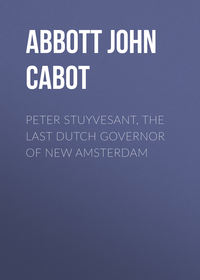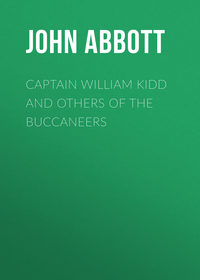 полная версия
полная версияПолная версия
King Philip
Enmity of the Pequots.
This was an achievement of immense moment. Other distant tribes, who were on the eve of joining the coalition, intimidated by the withdrawal of the Narragansets, and by their co-operation with the English, also refused to take part in the war, and thus the Pequots were left to fight the battle alone. But the Pequots, with their four thousand merciless warriors, were a fearful foe to rush from their inaccessible retreats, with torch and tomahawk, upon the sparse and defenseless settlements scattered along the banks of the Connecticut River.
Acts of violence.
Various acts of individual violence were perpetrated by the savages before war broke out in all its horrors. The English were anxious to avert hostilities, if possible, as they had nothing to gain from war with the natives, and their helpless families would be exposed to inconceivable misery from the barbarism of the foe.
Discovery of the murder of Captain Stone and his men.
The colonists now learned that the excuse which had been offered for the assault upon Captains Norton and Stone was a fabrication, and false in all its particulars. These men had engaged several Indians to pilot them up the river. They often stopped to trade with the natives. One night, as they were moored alongside of the shore, while many of the men had gone upon the land, and the captain was asleep in the cabin, a large number of Indians made a premeditated assault, and murdered all on board. The rest, as they returned in the darkness and unsuspicious of danger, were easily dispatched.
Trading expedition to the Pequots.
This new evidence of the treachery of the Pequots exasperated the colonists. Still, they did not think it best to usher in a war with such powerful foes by any retaliation. The Pequots, encouraged by this forbearance, became more and more insolent. In July, 1635, John Oldham ventured on a trading expedition to the Pequot country; for the Pequots, notwithstanding all the appearances against them, still pretended to friendship, and solicited trade. One object of sending Captain Oldham upon this expedition was to ascertain more definitely the real disposition of the savages.
John Gallop.
A few days after his departure, a man by the name of John Gallop was in a small vessel of about twenty tons, on his passage from Connecticut to Massachusetts Bay. A strong northerly wind drove him near Manisses, or Block Island. This island is about fourteen miles from Point Judith. It is eight miles long, and from two to four wide. To his surprise, he saw near the shore an English vessel, which he immediately recognized as Captain Oldham's, filled with Indians, and evidently in their possession. Sixteen savages, well armed with their own weapons, and with the guns and swords which they had taken from the English, crowded the boat.
Valiant behavior of Captain Gallop.
Captain Gallop was a man of lion heart, inspirited by that Puritan chivalry which ever displayed itself in the most amazing deeds of daring, without the slightest apparent consciousness that there was any thing extraordinary in the exploit. His little vessel was considerably larger than the boat which the Indians had captured. His crew, however, consisted of only one man and two boys. And yet, without the slightest hesitancy, he immediately decided upon a naval fight with the Indians. Loading his muskets and spreading all sail, he bore down upon his foe. The wind was fair and strong, and, standing firmly at the helm, while his crew were protected by the bulwarks from the arrows and bullets of the Indians, and were ready with their muskets to shoot any who attempted to board, he guided his vessel so skillfully as to strike the smaller boat of the foe fairly upon the quarter. The shock was so severe that the boat was nearly capsized, and six of the Indians were knocked into the sea and drowned.
Victory over the Indians.
Captain Gallop immediately stood off and prepared for another similar broadside. In the mean time, he lashed the anchor to the bows of the vessel in such a way that the fluke should pierce the side of the boat, and serve as a grappling iron. As there were now only ten Indians to be attacked, he decided to board the boat in case it should be grappled by the fluke of his anchor. Having made these arrangements, he again came running down before a brisk gale, and, striking the boat again, tore open her side with his anchor, while at the same moment he poured in a heavy discharge of buckshot upon the terrified savages. Most of them, however, had plunged into the hold of the little pinnace, and the shot effected but little execution. A third time he ran down upon the pinnace, and struck her with such force that five more, in their turn, leaped overboard and were drowned. There were now but five savages left, and the intrepid Gallop immediately boarded the enemy. Three of the savages retreated to a small cabin, where, with swords, they defended themselves. Two were taken captive and bound. Having no place where he could keep these two Indians apart, and fearing that they might get loose, and, in co-operation with the three savages who had fortified themselves in the cabin, rise successfully upon him, Captain Gallop threw one of the Indians overboard, and he was drowned. This was rough usage; but the savages, who had apparently rendered it necessary by their previous act of robbery and murder, could not complain.
The body of Captain Oldham.
Loss of the pinnace.
The pinnace was then stripped of her rigging and of all the goods which remained. The body of Captain Oldham was found, awfully mutilated, beneath a sail. The rest of the crew, but two or three in number, had been carried as captives by the savages on the shore. Captain Gallop buried the corpse as reverently as possible in the sea, and then took the pinnace in tow, with the three savages barricaded in the cabin. Night came on, dark and stormy; the wind increased to a tempest, and it was necessary to cut the pinnace adrift. She was never heard of more.
Retribution.
Block Island, where these scenes occurred, belonged to the Narragansets; but many who were engaged in the murder, as if fearful of the vengeance of Canonicus, their own chieftain, fled across the Sound to the Pequot country, and were protected by them. The Pequots thus became implicated in the crime. Canonicus, on the other hand, rescued the captives taken from the boat, and restored them to their friends. The English now decided that it was necessary for them so to punish the Indians as to teach them that such outrages could no longer be committed with impunity. It was a fearful vengeance which was resolved upon. An army of one hundred men was raised, commissioned to proceed to Block Island, burn every wigwam, destroy all the corn, shoot every man, and take the women and children captive. Thus the island was to be left a solitude and a desert.
The expedition.
The first attack.
The English victorious.
On the 25th of August, 1636, the detachment sailed from Boston. The Indians were aware of the punishment with which they were threatened, and were prepared for resistance. Captain John Endicott, who was in command of the expedition, anchored off the island, and seeing a solitary Indian wandering upon the beach, who, it afterward appeared, had been placed there as a decoy, took a boat and a dozen armed men, and rowed toward the shore. When they reached within a few rods of the beach, suddenly sixty warriors, picked men, tall, athletic, and of established bravery, sprang up from behind the sand-hills, rushed to the water's edge, and poured in upon the boat a volley of arrows. Fortunately, the boat was so far from the land that not much injury was done, though two were seriously wounded. As the water was shoal, the colonists, musket in hand, sprang from the boat and waded toward the shore, piercing their foes with a well-directed volley of bullets. Had the Indians possessed any measure of the courage of the English, the sixty savages might have closed upon the twelve colonists, and easily have destroyed them all; but they had no disciplined courage which would enable them to stand a charge. With awful yells of fury and despair, they broke and fled into the forests and the swamps.
The work of devastation.
Inefficiency of the punishment.
Captain Endicott now landed his force and commenced the work of destruction. There were two Indian villages upon the island, containing about sixty wigwams each. The torch was applied, and they were all destroyed. Every canoe that could be found was staved. There were also upon the island about two hundred acres of standing corn, which the English trampled down. But not an Indian could be found. The women and children had probably been removed from the island, and the warriors who remained so effectually concealed themselves that the English sought them in vain. After spending two days upon the island, the expedition again embarked, and sailed across the Sound to the mouth of the Thames, then called Pequot Harbor. As the vessel entered the harbor, about three hundred warriors assembled upon the shore. Captain Endicott sent an interpreter to inform them that he had come to demand the murderers of the English, and to obtain compensation for the injuries which the Indians had inflicted. To this the Pequots defiantly replied with a shower of arrows. Captain Endicott landed on both sides of the harbor where New London now stands. The Indians sullenly retired before him to the adjacent rocks and fastnesses, rendering it necessary for the English to keep in a compact body to guard against assault. Two Indians were shot, and probably a few others wounded. The wigwams along the shore were burned, and the canoes destroyed, and then the expedition again spread its sails and returned to Boston, having done infinitely more harm than good. They had merely exasperated their haughty foes. They had but struck the hornets' nest with a stick. The Connecticut people were in exceeding terror, as they knew that savage vengeance would fall mercilessly upon them.
Exultation of Sassacus.
Scenes of blood.
Sassacus was a stern man of much native talent. He laughed to scorn this impotent revenge. To burn an Indian wigwam was inflicting no great calamity. The huts were reared anew before the expedition had arrived in Boston. The Pequots now despised their foes, and, gathering around their council fires, they clashed their weapons, shrieked their war-whoop, and excited themselves into an intensity of rage. The defenseless settlers along the banks of the Connecticut were now at the mercy of the savages, who were roused to the commission of every possible atrocity. No pen can describe the scenes of woe which, during the autumn and winter of 1636 and 1637, transpired in the solitudes of the wilderness. The Indians were every where in marauding bands. At midnight, startled by the yell of the savage, the lonely settler sprang to his door but to see his building in flames, to be pierced with innumerable arrows, to fall upon his floor weltering in blood, and to see, as death was stealing over him, his wife and his children brained by the tomahawk. The tortures inflicted by the savages upon their captives were too horrible to be narrated. Even the recital almost causes the blood to chill in one's veins.
Energy of Sassacus.
Sassacus was indefatigable in his endeavors to rouse all the tribes to combine in a war of extermination.
"Now," said he, "is our time. If we do not now destroy the English, they will soon prove too powerful for us, and they will obtain all our lands. We need not meet them in open battle. We can shoot and poison their cattle, burn their houses and barns, lay in ambush for them in the fields and on the roads. They are now few. We are numerous. We can thus soon destroy them all."
Vigilance of the enemy.
Why did they not succeed in this plan? The only answer is that God willed otherwise. The Indians planned their campaign with great skill, and prosecuted it with untiring vigor. Not a boat could pass up or down the river in safety. The colonists were compelled to keep a constant guard, to huddle together in block-houses, and could never lie down at night without the fear of being murdered before morning. Almost every night the flame of their burning dwellings reddened the sky, and the shriek of the captives expiring under demoniac torture blended with the hideous shout of the savages.
Siege of Saybrook.
At the mouth of the Connecticut River the fort of Saybrook had been erected. It was built strongly of timber, to resist the approaches of the Dutch as well as of the Indians, and was garrisoned by about fifty men. As this point commanded the entrance of the river, it was deemed of essential importance that it should be effectually fortified. But the Pequots were now so emboldened that they surrounded the fort, and held the garrison in a state of siege. They burned every house in the vicinity, razed all the out-houses of the fort, and burned every stack of hay and every useful thing which was not within reach of the guns of the fortress. The cattle were all killed, and no person could venture outside of the fort. The Indians, keeping beyond the reach of gun-shot, danced with insulting and defiant gestures, challenging the English to come out, and mocking them with the groans and pious invocations which they had extorted from their victims of torture.
Necessity for energetic action.
Raising an army.
This awful state of affairs rendered it necessary to prosecute the war with a degree of energy which should insure decisive results. The story of Indian atrocities caused every ear in the three colonies to tingle, and all united to punish the common enemy. Plymouth furnished a vessel, well armed and provisioned, and manned by fifty soldiers under efficient officers. Massachusetts raised two hundred men to send promptly to the theatre of conflict. Connecticut furnished ninety men from the towns of Hartford, Windsor, and Wethersfield. This was an immense effort for the feeble colonists to make.
Uncas sachem of the Mohegans.
The Mohegans dwelt in the interior of the country, and were consequently nearer the English settlements. Their sachem, Uncas, had his royal residence in the present town of Norwich. He was a stern, reckless man, and quite ambitious of claiming independence of Sassacus, with his powerful section of the tribe. The Mohegans, Pequots, and Narragansets all spoke the same language, with but a slight diversity in dialect. The Mohegans, with apparent eagerness, united with the English. The Narragansets also continued firm in their pledged friendship to the Massachusetts and Plymouth colonists, and promised a liberal supply of warriors to aid them in punishing the haughty Pequots. Sassacus had now raised a storm which he well might dread. The doom of his tribe was sealed.
Departure of the troops.
Torture of a captive.
On Wednesday, the 10th of May, 1637, the Connecticut troops, consisting of ninety Englishmen and seventy Mohegans, embarked at Hartford in three vessels, and sailed down the river to the fort at Saybrook. The expedition was commanded by Captain John Mason. Uncas, the Mohegan sachem, led the Indian warriors. When they arrived near the mouth of the river, the Indians desired to be set on shore, that they might advance by land to the fort, and attack the Pequots by surprise. The English were very apprehensive that their unreliable allies were about to prove treacherous, and to desert to the Pequots. But, as it was desirable to test them before the hour of battle arrived, they were permitted to land. The Mohegans, however, proved faithful. On their way to the fort they fell in with forty Pequots, whom they attacked fiercely and put to rout, after having killed seven of their number, and taken one a captive. Their wretched prisoner they bound to a stake, and put to death with every barbarity which demoniac malice could suggest.
Fortresses.
The two parties met at Fort Saybrook. Sassacus was strongly intrenched, about twenty miles east of them, in two forts, or, rather, fortified towns. These Pequot fortresses were about five miles distant from each other, on commanding hills, one on the banks of the Thames, and the other on the banks of the Mystic. It was the original plan to sail directly into the mouth of the Thames, then called Pequot Harbor, and attack the savage foe in his concentrated strength. But these fortresses were so situated as to command an extensive view of the ocean, as well as of the adjacent country. The vessels, consequently, could not enter Pequot Harbor without being seen by the Indians, and thus giving them several hours' warning.
Plan of attack.
After long and anxious deliberation, the chaplain of the expedition, Rev. Mr. Stone, having been requested to pass the night in prayer for Divine guidance, it was decided to sail directly by the mouths of Pequot Harbor and the Mystic, and to continue along the shore to Narraganset Bay. Here they hoped to meet with the troops dispatched from Plymouth and Massachusetts. They could then march across the country about forty miles, and, approaching the Pequot forts in the night and through the forest, could attack them by surprise.
Delight of the Pequots.
Detentions.
Landing.
On Friday, the 19th of May, the expedition sailed from the mouth of the Connecticut. The Pequots, through their runners, kept themselves informed of every movement, and when they descried the vessels approaching, they felt that the decisive hour had come, and prepared for battle. But when they saw the vessels pass directly by without entering the harbor, they were exceedingly elated, supposing the English were afraid to attack them. They shouted, and danced, and clashed their weapons, and assailed their foes with all the artillery of barbarian derision. But the colonists, unconscious of the ridicule to which they were exposed, continued their course, and came to anchor in Narraganset Bay just as the twilight of Saturday evening was darkening into night. It was too late then to land, and the next day being the Sabbath, they all remained on board their vessels, in the sacred observance of the day. All of Monday, and until late in the afternoon of Tuesday, a fearful gale swept the ocean, so that no boat could pass to the shore. Tuesday evening, however, Captain Mason landed, and had an interview with Miantunnomah, a chief very high in rank, who seems to have shared with his uncle Canonicus in the government of the Narragansets.
"Two mighty chiefs – one cautious, wise, and old;One young, and strong, and terrible in fight —All Narraganset and Coweset hold;One lodge they build, one council-fire they light."Cordial reception.
Re-enforcements.
The fiery-spirited young sachem, hating the Pequots, and eager for a fight with them in conjunction with such powerful allies as the English, cordially received Captain Mason, granted him a passage through his country, and immediately called out a re-enforcement of two hundred men to join the expedition. That night an Indian runner arrived in the camp, and informed Captain Mason that Captain Patrick, with forty men, who had been sent in advance of the Massachusetts and Plymouth contingent, had reached Mr. Roger Williams's plantation in Providence, and were hastening to meet him. Desirable as this junction was deemed, after mature deliberation, it was decided not to wait for Captain Patrick, as it was very important to strike a sudden and unexpected blow. The Narragansets stood in great dread of the Pequots, and it was feared that their zeal might grow cold. It was also feared that if they did not proceed immediately, the Pequots might receive tidings of their approach.
Determination to proceed.
Boasting.
Continued re-enforcements.
The little army, therefore, the very next morning, Wednesday, May 24th, commenced its march. The force consisted of seventy-seven Englishmen, sixty Mohegans, and two hundred Narragansets. The Narragansets were great braggarts. They made the forest resound with their vainglorious boasts, and, with the most valiant gestures, declared that they would now show the English how to fight. Guided by Indians through the forest, they pressed along rapidly through the day, and at night, having traversed about twenty miles, bivouacked upon the banks of a small stream. The next morning they resumed their march, and, crossing the stream, approached the territory of the Pequots. As they had advanced, large numbers of Narraganset warriors had flocked to join them, and they had now five hundred of these boastful savages in the advance leading them on.
Rapid march.
The day was intensely hot, and, in their rapid march, several of the troops fainted by the way. But, conscious that much depended upon taking the Pequots by surprise, Captain Mason urged his men forward, and about noon reached the banks of the Pawcatuck River, about twelve miles from the previous night's encampment. The Indians led them to a point in the river where they could pass it by a ford. They halted here for an hour, and refreshed themselves, and then moved on with much caution, as they were now almost in the country of their foe. It was but twelve miles from the ford to the first Pequot fort on the banks of the Mystic.
Plan of attack changed.
Ardor of the Indians cooled.
Desertions.
It had been the intention to attack both the forts, the Mystic and the Pequot, at once; but Wequash, a Pequot sachem, who had revolted from Sassacus, and, treacherous to his tribe, acted as their guide, here gave them such information respecting the situation and strength of these fortresses as induced them to alter their resolution, and to decide to make a united attack upon the fort at Mystic. When the Narragansets found that Captain Mason was actually intending to march directly up to the very palisades of the fort, and assail those fierce and terrible warriors in their strongholds, they were filled with amazement and consternation. Many deserted and returned to Narraganset. All who remained lingered irresolutely in the rear. The English now found that their Indian allies could render them but very little service. Undaunted, however, by the great odds against which they would have to contend, they pressed vigorously and silently on, followed by a vagabond train of two or three hundred savages. The sun had gone down, and the shades of night were descending upon the forest when they reached the banks of the Mystic.
They were now within three miles of one of the great Pequot forts, on what is still called Pequot Hill, in the present town of Groton. Crossing the stream, here narrow and shallow, by a ford, they crept cautiously along, in the deepening darkness, until they came to a smooth and level plot of ground between two craggy bluffs now called Porter's Rocks.
Repose.
Devotions of the English.
The troops, excessively fatigued by travel and the heat of the sultry day, threw themselves upon the ground for a few hours' repose, intending to advance and make the attack upon the fort just before the break of day. The night was serene and cloudless, and a brilliant moon illumined the couch of the weary soldiers. They were now so near the fort that they could hear the shouts of the savages in their barbaric carousals. A few moments after midnight they were all aroused from their sleep to march to the perilous assault. Devoutly these Christian heroes gathered around their chaplain, the Reverend Mr. Stone, and, with uncovered heads, united with him in fervent prayer that God would bless their enterprise. They were not going into the battle inspired by ambition, or the love of conquest, or the greed of gain. They were contending only to protect their wives and their children from the vengeance of a savage and a merciless foe. The Narragansets, now that the stern hour of trial had come, were in such a state of consternation that Captain Mason gathered them around him and said,
Address to the Indians.
"We ask no aid from you. You may stand at any distance you please, and look on, and see how Englishmen can fight."
The fort.
The fort was on the summit of a heavy swell of land, and consisted of a village of seventy wigwams, surrounded by a palisade. These palisades consisted of posts planted side by side, and so high that they could not be climbed over. The warriors stationed behind them were safe apparently from assault, for even a musket ball would not pass through the posts. There were but two entrances to the fort, one on the northeastern and the other on the southwestern side. Between six and seven hundred Indians were within the fort.











